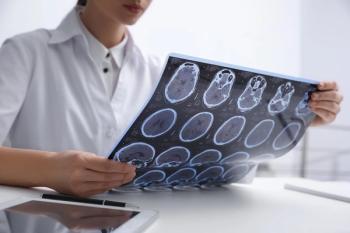
Dr Daniel Kantor Explains How MS Measurement and Prediction Can Lead to Precision Medicine
Using imaging, laboratory testing, and predictive models, the field of multiple sclerosis (MS) is getting closer to predicting the course of MS and, eventually, the best medication for a given patient, said Daniel Kantor, MD, president of Kantor Neurology.
Using imaging, laboratory testing, and predictive models, the field of multiple sclerosis (MS) is getting closer to predicting the course of MS and, eventually, the best medication for a given patient, said Daniel Kantor, MD, president of Kantor Neurology.
Transcript
What testing is available to predict disease severity and progression in patients with multiple sclerosis?
One of the things that we’re doing with the Precision Innovative Network is we’re saying what can we do across the United States to measure multiple sclerosis more carefully, and how can we objectify that, and then how can we take that data and plug it into machine learning and artificial intelligence to actually help us?
We’ve submitted information to the largest MS meeting coming up this year in Stockholm, and what we’re looking at is using our predictive models to predict falls and to predict the idea of people driving or not driving. That’s amazing. We know how much a problem it is in the United States when we have falls. It’s a huge public health problem. Driving is a large, large problem. If we’re able to use predictive models for that, that would really be a step forward in what we’re trying to do.
Then we also use things like testing, like MRIs [magnetic resonance imaging]. The standard MRI hasn’t been that useful, because it’s well known that there’s a disconnect between how many lesions you have on your MRI and how bad your MS is. You could have really bad multiple sclerosis and have very little to nothing on your MRI. You could have a terrible MRI and have pretty good multiple sclerosis. And so we’re looking at other types of imaging characteristics. We’re starting to be more quantitative about it. We’re starting not just to look at a picture and opine, “well, we think it looks this way,” we’re actually going and measuring it and using kind of those mathematical models to get a better idea.
We’re also looking at labs. Every few years we focus on one biomarker or another. For the last several years we’ve been focusing a lot on neurofilament light chains. The issue with neurofilament light chains is that it’s not just a marker of multiple sclerosis; it’s nonspecific. If you have damage to your central nervous system from almost anything, you’re going to see an increase in those light chains, just showing you that there’s been destruction. But in a person with multiple sclerosis, if they don’t have other things going on and you don’t have another reason why they would have had destruction in their central nervous system, if you suddenly see an increase, well, that tells you that there might be an increase in their multiple sclerosis. So we’re getting better at trying to understand that.
That means that, I think, over the next 5 to 10 years, we’re going to get a lot better at predicting how people do in multiple sclerosis, and the holy grail is to also be able to predict which medicine is right for the person in front of you. Really getting to that idea of tailored medicine. What can we do in this era of precision medicine to bring multiple sclerosis up to date with all the other things that are going on in the field?
Newsletter
Stay ahead of policy, cost, and value—subscribe to AJMC for expert insights at the intersection of clinical care and health economics.









































